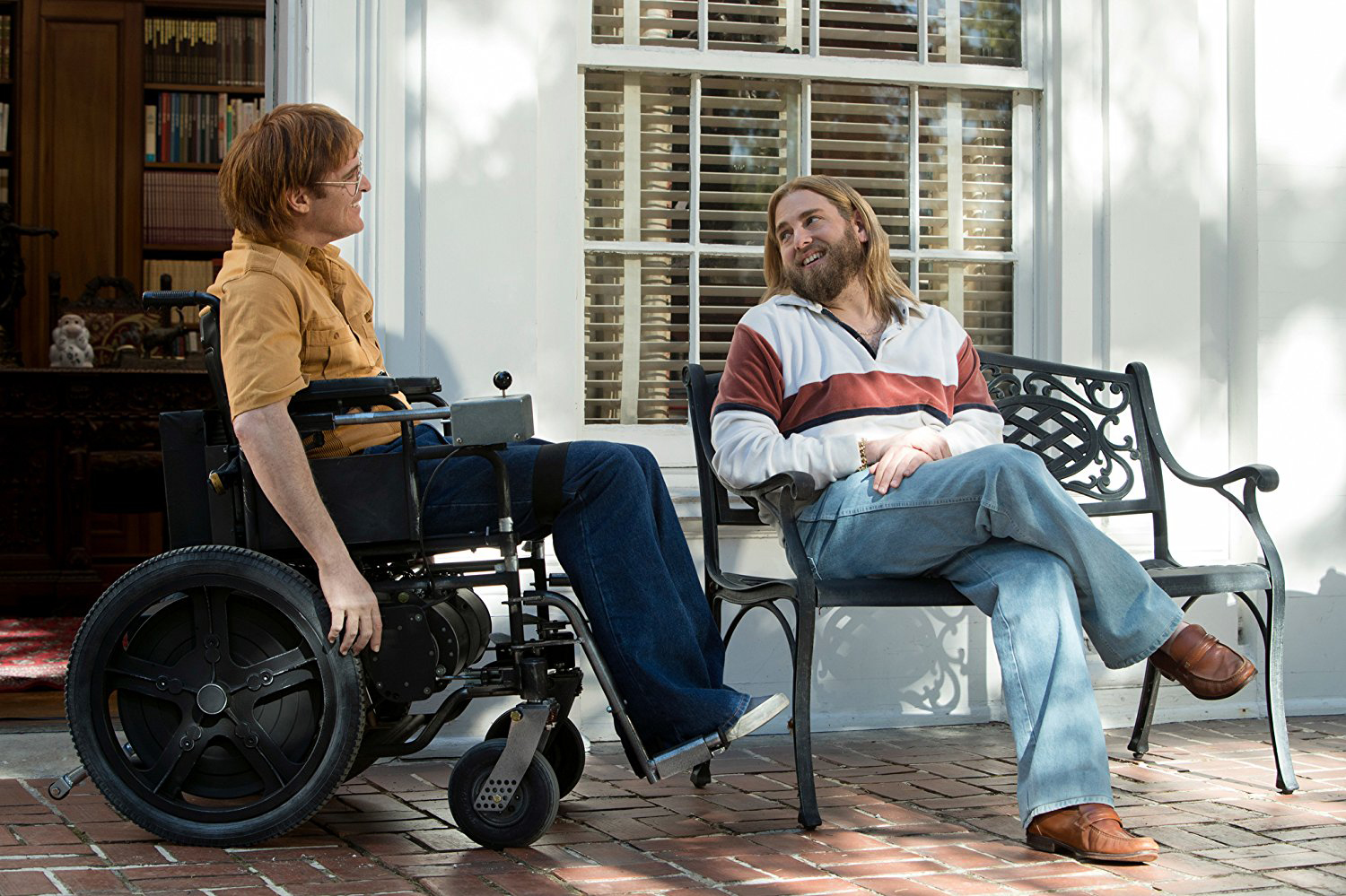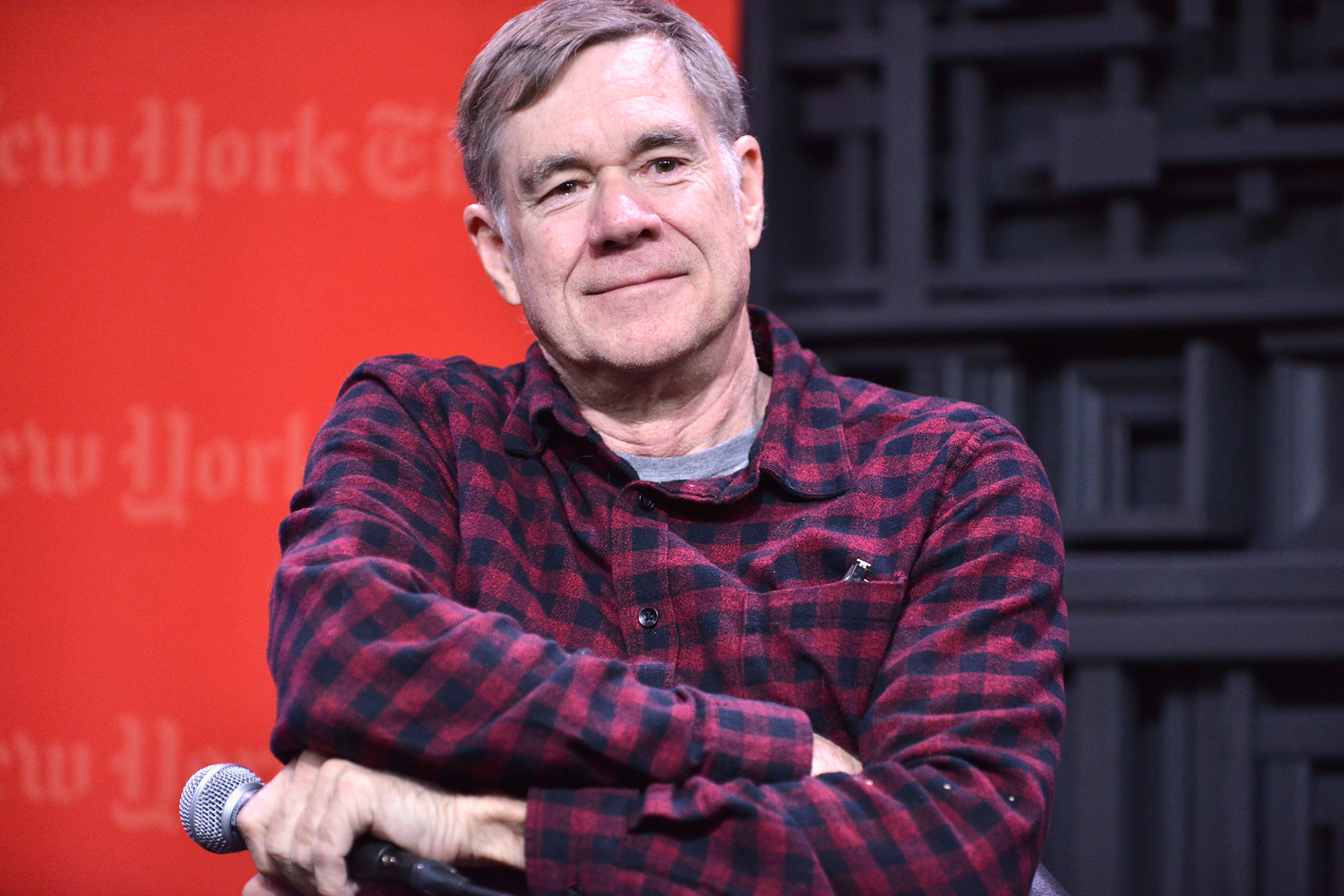
- Festivals
Gus Van Sant Talks About ‘Don’t Worry, He Won’t Get Far on Foot’
Gus Van Sant, director of Golden Globe winning films Good Will Hunting (screenplay for Matt Damon and Ben Affleck) and To Die For (best actress for Nicole Kidman) and MilkDon’t Worry, He Won’t Get Far on Foot, which premiered last Saturday night before going to Berlin in February. It is the thoroughly original biography of Portland, Oregon, cartoonist John Callahan, who died in 2010 and whose cartoons have come to be recognized all over America. Joaquin Phoenix (who worked with Van Sant in To Die For in 1995), plays Callahan, an alcoholic who is left paraplegic in a car accident (he was a passenger of a car driven by his alcoholic friend – Jack Black, in a small but poignant role). With the help of his sobriety sponsor (Jonah Hill) and the affection of his girlfriend (Rooney Mara), Callahan comes to find joie de vivre through his art.
We spoke about the film with the director in Park City.

Gus Van Sant in Sundance
getty images
Mr. Van Sant, why this film, and how long have you been fascinated with the life of John Callahan?
I had known Callahan for a little while when I lived in Portland, in the late 80s: I was a filmmaker and he was a cartoonist. You could see him often riding very fast down the street in his wheelchair. Then about 20 years ago, after Good Will Hunting, Robin Williams, unbeknownst to me, bought the memoirs book Callahan had written, Don’t Worry, He Won’t Get Far On Foot, and he wanted to make a movie from his book. Robin asked whether I wanted to help develop it for he and his wife Marsha, who were developing it for Sony at the time. And then I said “Yeah, of course, that would be fantastic.” So I started working on it, back in 1997, and I continued working on it until today. There was a period in time where it was obvious that the film wasn’t going to happen, I think because of the conflict between the intensity of John Callahan’s life, which was quite dark, and the nature of Robin Williams’ art, which was seen by the “money people” as more comedic, so we could never get it done. After Robin was gone, Sony, which still had the book, came back to me with the project. I thought of different people to play John, and Joaquin, who I was close to, seemed the perfect person.
The film has a lot of funny moments: were they deliberate?
They were, because John Callahan was a cartoonist, so comedy was part of his business. In person he was very funny, and he would come up with puns which worked very well on his cartoons. John was making light of life’s incongruities, chance happenings, bad luck, good luck, in a funny fashion, as he does in his comic strips. He was strangely very afraid of people, of a crowd, to the point where even in AA, as we see in the movie, he had a hard time speaking to a group of 30 people. But because of the comic subject, I started to think of people that were funny as part of the cast.
How was working with Joaquin Phoenix again?
Joaquin and I had conspired to work on a number of different things through our history. He has been a very serious actor since we did To Die For together. He was my neighbor in New York and so there were projects that came and went that either he was a part of or I was a part of and we never found a place to work together. Two or three years ago we came close to do something together. And that also didn’t work out. But in this case, he was very sure, and I was happy that he was.
Why did you feel he was the right actor for the role?
It’s always a hard thing to have an actor portray somebody who’s somewhat well known, but he was definitely right for the role. Since working with him from the To Die For days, he has developed incredibly as an actor. And this was not an easy role! We had tapes of John Callahan and he had a very high pitch voice, he kind of whispered his words. Joaquin tried that out a little bit and then he said, “You know, I kind of just have to use a new voice and not imitate John.” And I think it was better and more worthwhile to create something new than to just mimic him.
How did Joaquin prepare for the role of a quadriplegic?
Like every time I work on a film, I try to figure out the most accurate way to portray it. We went to the original rehab hospital, which was Rancho De Los Amigos in Downey. It had been many years since John was there, but some of the same buildings were there. Joaquin worked there with some of the people who were in the same conditions as John, as he was a C-5, C-6 quadriplegic. Joaquin learned the physical traits. And I developed the script with John, so we were often at his house videotaping him, and he was always explaining certain things that were a part of his condition. It took him three hours in the morning to sort of get out of bed with the help of an attendant. He needed to have physical therapy and he needed to exercise, and exercise meant people lifting his arms and legs, like we see in the movie. Whatever information we could find, mostly emanating from the facility he was in and mostly John himself.
You are certainly not new to Sundance. Do you feel it has changed over the years?
No, not so much. Not to me. I could say like “Oh, the old days were great…” I mean, of course it’s different, but it just seems the same to me.